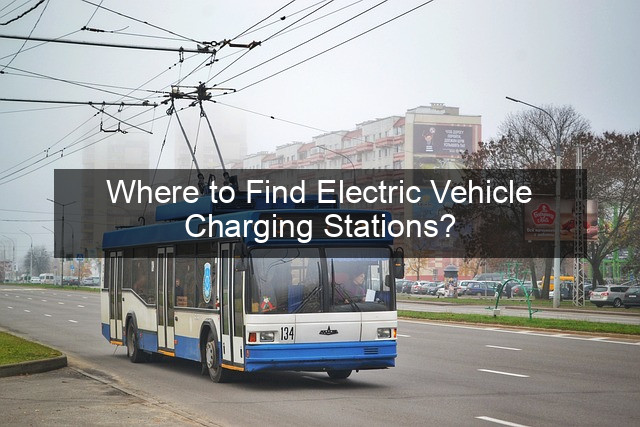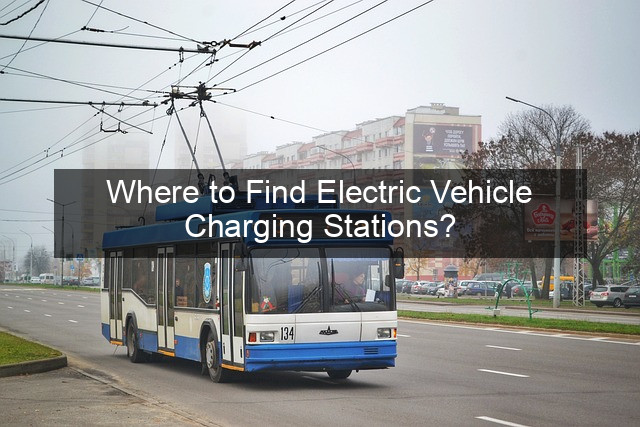Where to Find Electric Vehicle Charging Stations?

- Where to Find Electric Vehicle Charging Stations?
- Where to Find Electric Vehicle Charging Stations?
- Finding Charging Stations Near You
- Using Smartphone Apps
- Leveraging Online Resources
- Checking with Your Car Manufacturer
- Exploring Different Types of Charging Stations
- Level 1 Charging
- Level 2 Charging
- Level 3 Charging (DC Fast Charging)
- Planning for Long Trips with Your EV
- Mapping Your Route
- Considering Charging Speeds and Connector Types
- Having Backup Plans
- Conclusion
- Frequently Asked Questions

Where to Find Electric Vehicle Charging Stations?
The electric vehicle (EV) revolution is upon us. More and more drivers are making the switch to electric cars, drawn by their environmental benefits, lower running costs, and impressive performance. But one question consistently arises for both prospective and current EV owners: where can I reliably charge my vehicle? The availability of charging infrastructure is crucial for the continued growth of the EV market. Fortunately, the charging landscape is rapidly evolving, with a growing network of stations popping up across the globe. This article will guide you through the various ways to locate electric vehicle charging stations, ensuring you’re never left stranded with a low battery.
Finding Charging Stations Near You
Using Smartphone Apps
Smartphone apps are arguably the most convenient way to locate electric vehicle charging stations. These apps provide real-time information on station availability, charging speeds, connector types, and even pricing. Many apps also allow you to filter your search based on your specific needs, such as fast charging capability or network affiliation. They can also navigate you directly to your chosen station, simplifying the charging process.
Several apps offer additional features, including user reviews, payment integration, and the ability to reserve charging slots in advance. This level of functionality makes these apps indispensable tools for any EV driver.
With the proliferation of these apps, finding a suitable charging station is now easier than ever before. They truly put the power of charging at your fingertips.
Leveraging Online Resources
Beyond smartphone apps, numerous websites offer comprehensive databases of electric vehicle charging stations. These websites often provide similar information to apps, such as station location, connector types, and availability. Many also include user reviews and photos, giving you a better understanding of the charging experience at each location.
These online resources are particularly useful for planning longer trips, allowing you to map out charging stops along your route. This pre-planning can alleviate range anxiety and ensure a smooth and stress-free journey.
By utilizing these online tools, you can confidently navigate the expanding EV charging network.
Checking with Your Car Manufacturer
Many car manufacturers offer their own branded charging networks or partnerships with existing networks. Checking with your manufacturer can provide valuable information on compatible charging stations and potentially exclusive benefits, such as discounted charging rates or membership programs.
Some manufacturers also integrate charging station information directly into their vehicle navigation systems, further simplifying the process of finding a charge.
This manufacturer-specific information can be a valuable resource for new EV owners.
Exploring Different Types of Charging Stations
Level 1 Charging
Level 1 charging uses a standard household outlet and is the slowest charging option. It’s suitable for overnight charging or when you have an extended period to replenish your battery. While convenient, Level 1 charging provides a limited range boost per hour.
This type of charging is readily available but may not be ideal for those needing a quick charge.
Level 1 is a good option for topping off your battery when you have ample time.
Level 2 Charging
Level 2 charging utilizes a dedicated 240-volt circuit and is significantly faster than Level 1. These stations are commonly found in public locations, workplaces, and residential buildings. Level 2 charging is a good balance between speed and cost-effectiveness.
This is the most common type of public charging and is ideal for topping up during errands or at work.
Level 2 provides a substantial range boost in a reasonable timeframe.
Level 3 Charging (DC Fast Charging)
Level 3 charging, also known as DC fast charging, is the fastest charging option available. These stations can deliver a significant charge in a short amount of time, making them ideal for long-distance travel. However, DC fast charging is typically more expensive than Level 1 or 2 charging.
These stations are strategically located along major highways and in urban centers, providing convenient rapid charging options.
DC fast charging is perfect for quickly adding range during road trips.
Planning for Long Trips with Your EV
Mapping Your Route
Planning your route meticulously is essential for long-distance EV travel. Identify potential charging stops along your route and factor in charging time into your overall travel time. Utilizing online mapping tools specifically designed for EVs can significantly simplify this process.
Careful planning can minimize range anxiety and ensure a smooth journey.
Mapping your charging stops is crucial for a successful EV road trip.
Considering Charging Speeds and Connector Types
Different EVs have different charging capabilities and connector types. Ensure that the charging stations along your planned route are compatible with your vehicle. Consider the charging speed offered by each station and how it aligns with your travel schedule.

Knowing your vehicle’s charging specifications is vital for efficient charging.
Choosing the right charging station can save you valuable time on the road.
Having Backup Plans
While planning is crucial, having backup plans is equally important. Identify alternative charging locations in case your preferred station is unavailable or malfunctioning. Consider carrying a Level 1 charging cable for emergencies.
Being prepared for unexpected situations can prevent delays and frustration.
A little foresight can go a long way in ensuring a smooth EV journey.
| Charging Level | Voltage | Charging Speed | Typical Locations |
|---|---|---|---|
| Level 1 | 120V | Slowest | Home |
| Level 2 | 240V | Moderate | Public locations, workplaces |
| Level 3 | 400V+ | Fastest | Highways, urban centers |
- Plan your routes carefully.
- Utilize charging apps and websites.
- Know your vehicle’s charging capabilities.
Conclusion
The network of electric vehicle charging stations is constantly expanding, making EV ownership increasingly practical and convenient. By utilizing the resources and strategies outlined in this article, you can confidently navigate the charging landscape and enjoy the benefits of electric driving. As the EV revolution continues to gain momentum, the availability of charging infrastructure will only continue to improve, further solidifying the place of electric vehicles as the future of transportation.
Frequently Asked Questions
How do I find the closest charging station to me?
Use a smartphone app or website designed for locating EV charging stations. Many navigation apps also include this functionality.
What are the different levels of EV charging?
There are three main levels: Level 1 (slowest), Level 2 (moderate), and Level 3 (fastest, also known as DC fast charging).
How much does it cost to charge an EV?
Costs vary depending on the charging level, location, and network provider. Some locations offer free charging, while others charge per kilowatt-hour or per session.
What if I run out of charge while driving?
Contact your roadside assistance provider or a towing service. Some EV manufacturers offer dedicated support for out-of-charge situations.

